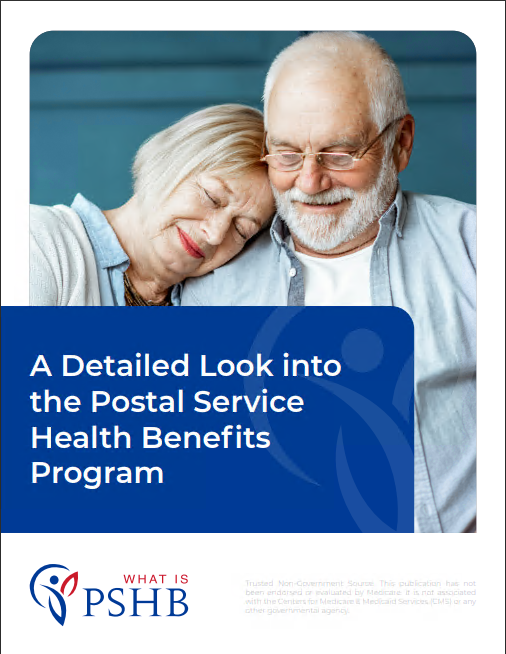Employee Contributions and Premiums: Understanding Healthcare Costs
Navigating the realm of healthcare expenses can often feel like traversing a complex maze, especially for postal service employees and retirees enrolled in the Postal Service Health Benefits (PSHB) program. One of the fundamental aspects of this journey is comprehending employee contributions and premiums, which play pivotal roles in determining the overall cost of healthcare coverage. In this guide, we delve deeper into these topics, exploring their intricacies, impact, and strategies for effective management.
Employee Contributions: Understanding Financial Responsibility
Employee contributions are the cornerstone of healthcare financing in the PSHB program. They represent the portion of healthcare costs that postal service employees and retirees are responsible for covering to maintain their healthcare coverage. Essentially, it’s the share individuals contribute towards premiums, deductibles, copayments, and coinsurance. While the term might sound straightforward, the mechanics behind employee contributions can be multifaceted.
Factors Influencing Employee Contributions
Employee contributions are subject to various factors, each contributing to the complexity of determining the exact amount individuals are required to pay. Plan selection is perhaps the most significant determinant, as different plans come with varying premium rates and cost-sharing structures. Individuals opting for more comprehensive coverage or family plans may incur higher contributions than those selecting basic coverage or individual plans. Additionally, employment status, such as full-time or part-time, may impact employee contributions, as may negotiated agreements or collective bargaining agreements in some cases.
The Importance of Plan Selection
Given the influence of plan selection on employee contributions, making an informed choice becomes paramount. Postal service employees and retirees must carefully assess their healthcare needs, anticipated usage, and financial capabilities when selecting a plan. Balancing premiums with out-of-pocket costs, such as deductibles and copayments, is crucial to ensure adequate coverage without overburdening finances. Understanding the intricacies of each plan option empowers individuals to make decisions aligned with their unique circumstances and priorities.
Premium Structures: Deciphering Monthly Costs
At the heart of employee contributions lie premiums, the recurring monthly payments individuals make to sustain their PSHB coverage. Premiums serve as the primary source of revenue for funding healthcare benefits, covering expenses such as medical services, prescription drugs, administrative costs, and more. While premiums may appear straightforward as fixed amounts, their underlying structures and determinants warrant closer examination.
Fixed vs. Variable Premiums
Premiums typically follow a fixed structure, where individuals pay a set monthly amount for their healthcare coverage. This fixed nature provides predictability and stability, allowing individuals to budget effectively for healthcare expenses. However, premium rates may not remain static indefinitely; they can fluctuate over time due to various factors, including changes in healthcare costs, utilization patterns, regulatory requirements, and demographic shifts. Despite this potential variability, premium structures aim to balance individual affordability and healthcare system sustainability.
Premium Rates: Behind the Numbers
Determining premium rates involves evaluating numerous factors influencing healthcare costs and financial viability. Healthcare costs, including medical services, prescription drugs, and preventive care, are significant in premium calculations. Rising healthcare costs, driven by factors such as advances in medical technology, pharmaceutical innovations, and an aging population, may necessitate adjustments to premium rates to ensure adequate funding for healthcare benefits. Additionally, utilization patterns, demographic characteristics, geographic variations, and regulatory mandates all contribute to the complexity of premium rate settings.
Factors Influencing Premium Rates: Unraveling the Puzzle
Unraveling the puzzle of premium rate determination reveals a myriad of interconnected factors shaping the cost of healthcare coverage. While healthcare costs and utilization patterns serve as foundational pillars, demographic characteristics play a significant role in fine-tuning premium rates to reflect the unique risk profiles of different population groups.
Healthcare Costs: A Driving Force
At the core of premium rate determination lies healthcare costs, encompassing expenses associated with medical services, prescription drugs, hospitalizations, and preventive care. The relentless march of medical progress, characterized by breakthrough treatments, innovative therapies, and cutting-edge technologies, often comes hand in hand with escalating healthcare costs. These costs constitute a substantial portion of premium expenditures, compelling plan administrators to carefully assess and adjust premium rates to maintain financial sustainability while ensuring adequate coverage.
Utilization Patterns: Shaping the Landscape
Understanding healthcare utilization patterns is crucial for accurately projecting future healthcare costs and setting premium rates. Factors such as frequency of doctor’s visits, utilization of preventive care services, hospital admissions, and prescription drug usage all influence the overall cost of healthcare coverage. Analyzing utilization data allows plan administrators to anticipate healthcare needs, identify trends, and adjust premium rates accordingly to align with anticipated expenses.
Demographic Characteristics: Tailoring Premiums to Risk
Demographic characteristics, including age, gender, location, and tobacco use, are valuable healthcare risk and cost indicators. Older individuals and those with pre-existing medical conditions may incur higher healthcare costs due to increased healthcare utilization and greater susceptibility to chronic conditions. As such, premium rates may reflect these risk factors, with older individuals and those with higher healthcare needs typically facing higher premium rates to offset the anticipated expenses associated with their demographic profile.
Managing Healthcare Expenses: Navigating the Terrain
Amidst the complexity of employee contributions and premium structures, effective management of healthcare expenses becomes paramount. Postal service employees and retirees must navigate the healthcare terrain with prudence, leveraging strategies to optimize coverage while minimizing financial strain.
Budgeting: A Strategic Approach
Strategic budgeting forms the cornerstone of effective expense management, providing individuals with a roadmap for allocating financial resources toward healthcare costs. By proactively planning and earmarking funds for premiums, deductibles, copayments, and coinsurance, individuals can mitigate the risk of financial strain and ensure timely payment of healthcare expenses. Integrating healthcare expenses into a comprehensive budgeting framework fosters financial resilience and empowers individuals to maintain financial stability amidst healthcare uncertainties.
Health Savings Accounts (HSAs): Tax-Advantaged Solutions
For individuals enrolled in high-deductible health plans (HDHPs), health savings accounts (HSAs) offer a tax-advantaged solution for saving and paying for qualified medical expenses. Contributions to HSAs are tax-deductible, providing individuals with valuable tax benefits while accumulating funds to cover out-of-pocket healthcare costs. HSAs empower individuals to take control of their healthcare finances, offering flexibility, portability, and potential long-term savings growth.
Utilization Management: Maximizing Value
Maximizing the value of healthcare coverage entails prudent utilization management, wherein individuals leverage preventive care services, adhere to treatment plans, and explore cost-effective healthcare alternatives. Prioritizing preventive care, such as annual check-ups, screenings, and immunizations, facilitates early detection and intervention, averting potential health complications and reducing overall healthcare costs. Additionally, exploring in-network providers, generic prescription drugs, and telehealth services can yield cost savings while maintaining quality care.
Conclusion: Navigating the Path Ahead
As postal service employees and retirees embark on their healthcare journey within the PSHB program, understanding the intricacies of employee contributions and premium structures is paramount. By unraveling the complexities of these concepts and exploring strategies for effective expense management, individuals can navigate the healthcare landscape with confidence and clarity. Empowered with knowledge and equipped with practical tools, postal service employees and retirees can optimize their healthcare coverage, mitigate financial strain, and embark on a path toward enhanced well-being and financial resilience.
Featured Articles
As seniors navigate the healthcare landscape,
As seniors navigate the healthcare landscape,
As seniors navigate the healthcare landscape,
Licensed agents are available to help you find the best Medicare plan for you.
Working with a licensed agent can simplify your PSHB & Medicare experience.
Feedback For What Is PSHB
Let us know what you think!








